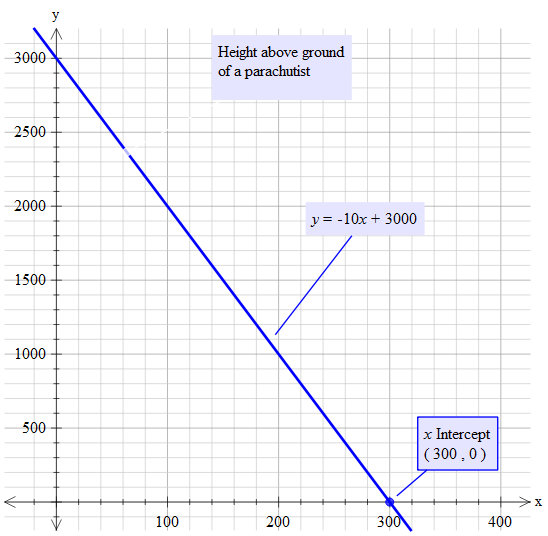A skydiver parachutes to the ground. The height y (in feet) of the skydiver after x seconds is #y=-10x+3000#, how do you graph and Interpret the x-intercept and the slope?
1 Answer
See description
Explanation:
You have to try and understand what the numbers are doing and associate that with actual events.
It is stated that
The right hand side (RHS) has negative
The
~~~~~~~~~~~~~~~~~~~~~~~~~~~~~~~~~~~~~~~~~~~~~~~~~~~~~~~~
At the point where the graph crosses the x-axis it means that
Consequently the x-intercept is at the point of reaching the ground.
The slope is the rate of descent which is constant as time (x) increases.
..................................................................................................................
Actually the rate of descent is a very rounded value. To 2 decimal places I think it is 9.81 metres per second per second in metric form.
In imperial form it is something like 32.2 feet per second per second.
....................................................................................................................
Set


